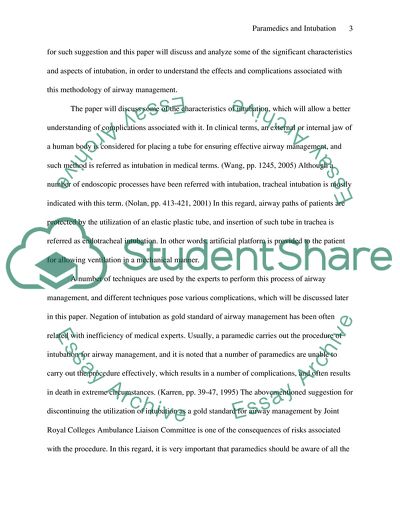Cite this document
(Paramedics and Intubation Literature review Example | Topics and Well Written Essays - 2000 words, n.d.)
Paramedics and Intubation Literature review Example | Topics and Well Written Essays - 2000 words. Retrieved from https://studentshare.org/medical-science/1716971-paramedics-and-intubation-a-review-of-the-literature
Paramedics and Intubation Literature review Example | Topics and Well Written Essays - 2000 words. Retrieved from https://studentshare.org/medical-science/1716971-paramedics-and-intubation-a-review-of-the-literature
(Paramedics and Intubation Literature Review Example | Topics and Well Written Essays - 2000 Words)
Paramedics and Intubation Literature Review Example | Topics and Well Written Essays - 2000 Words. https://studentshare.org/medical-science/1716971-paramedics-and-intubation-a-review-of-the-literature.
Paramedics and Intubation Literature Review Example | Topics and Well Written Essays - 2000 Words. https://studentshare.org/medical-science/1716971-paramedics-and-intubation-a-review-of-the-literature.
“Paramedics and Intubation Literature Review Example | Topics and Well Written Essays - 2000 Words”. https://studentshare.org/medical-science/1716971-paramedics-and-intubation-a-review-of-the-literature.


